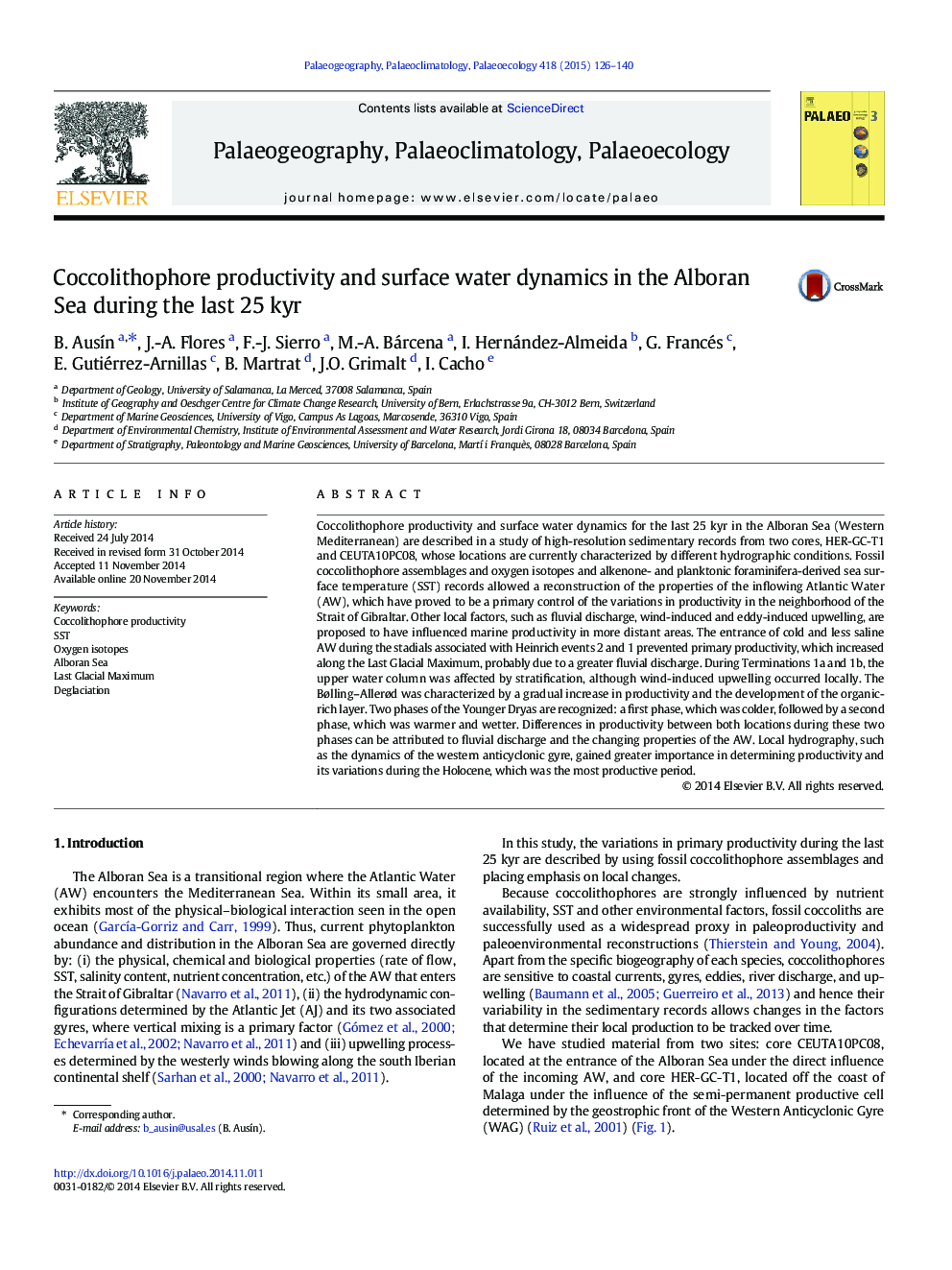| Article ID | Journal | Published Year | Pages | File Type |
|---|---|---|---|---|
| 6349799 | Palaeogeography, Palaeoclimatology, Palaeoecology | 2015 | 15 Pages |
•Coccolithophores are sensitive to local hydrographic and environmental conditions.•Atlantic water drove productivity variation near the Strait of Gibraltar.•Local factors influenced productivity in more distant areas.
Coccolithophore productivity and surface water dynamics for the last 25 kyr in the Alboran Sea (Western Mediterranean) are described in a study of high-resolution sedimentary records from two cores, HER-GC-T1 and CEUTA10PC08, whose locations are currently characterized by different hydrographic conditions. Fossil coccolithophore assemblages and oxygen isotopes and alkenone- and planktonic foraminifera-derived sea surface temperature (SST) records allowed a reconstruction of the properties of the inflowing Atlantic Water (AW), which have proved to be a primary control of the variations in productivity in the neighborhood of the Strait of Gibraltar. Other local factors, such as fluvial discharge, wind-induced and eddy-induced upwelling, are proposed to have influenced marine productivity in more distant areas. The entrance of cold and less saline AW during the stadials associated with Heinrich events 2 and 1 prevented primary productivity, which increased along the Last Glacial Maximum, probably due to a greater fluvial discharge. During Terminations 1a and 1b, the upper water column was affected by stratification, although wind-induced upwelling occurred locally. The Bølling–Allerød was characterized by a gradual increase in productivity and the development of the organic-rich layer. Two phases of the Younger Dryas are recognized: a first phase, which was colder, followed by a second phase, which was warmer and wetter. Differences in productivity between both locations during these two phases can be attributed to fluvial discharge and the changing properties of the AW. Local hydrography, such as the dynamics of the western anticyclonic gyre, gained greater importance in determining productivity and its variations during the Holocene, which was the most productive period.
